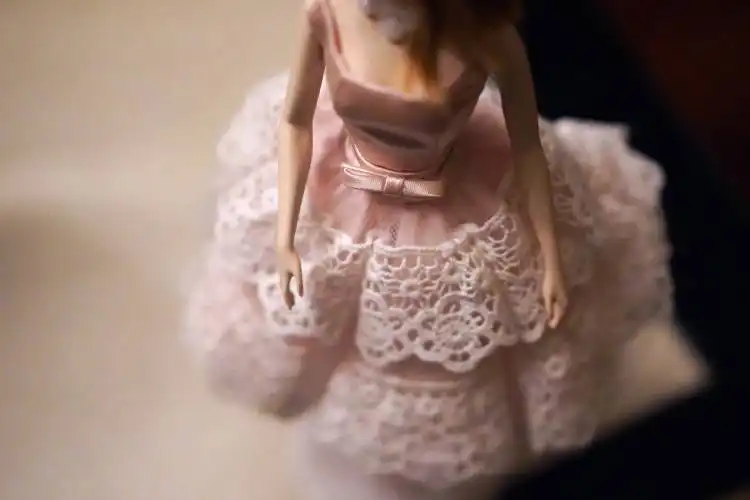Start a Custom Portrait Business
Unleashing the Artist-Entrepreneur: The Beauty of a Custom Portrait Business
| Updated


CUSTOM PORTRAIT BUSINESS
Get ready to unleash your creative flair with a Custom Portrait Business! This venture is a beautiful blend of art and commerce, transforming your artistic talent into tangible profits. In this line of work, you'll be crafting one-of-a-kind, personal portraits for clients, providing a unique, sentimental touch to the world of gift-giving or home decor. It's about capturing a persona on canvas, immortalizing memories, and channeling emotions into strokes of paint. So, get your palette ready and brace yourself to bring smiles, tears of joy, and artistic enlightenment to your customers' lives.
Jump to Business Plan
RELATED BUSINESS IDEAS
Browse ALL Arts & Crafts Business Ideas
Discover Your Perfect Domain
Unlock the door to your online success with our hand-picked selection of premium domain names. Whether you're starting a new venture or rebranding an existing one, the right domain can set the tone for your digital presence. Browse through our curated list, each with its unique potential to enhance your brand's visibility and credibility.
CUSTOM PORTRAIT MINI BUSINESS PLAN
This a quick reality check to help you identify the strengths and weaknesses of your business concept before you dive in.
Expected Percent Margin:
- Gross Margin: 60-80%
- Net Profit Margin: 20-30%
Earnings Expectations:
- Daily Earnings: $100 - $300
- Weekly Earnings: $700 - $2,100
- Monthly Earnings: $3,000 - $9,000
- Annual Earnings: $36,000 - $108,000
Actions to Hit Those Numbers:
Talent and Portfolio:
- Skill Level: Master the art of creating engaging, high-quality portraits.
- Portfolio Development: Build a diverse portfolio showcasing variety in styles, subjects, and mediums.
Marketing and Customer Acquisition:
- Social Media: Post finished portraits regularly on various social media platforms to showcase your skills and attract clients.
- Referral Program: Consider a referral program that provides a discount or reward for referrals leading to new business.
Sales and Customer Experience:
- Pricing: Establish a clear pricing algorithm based on factors like size, medium, complexity, and delivery time.
- Client Relationship: Maintain an active interaction with the customer during the process to ensure satisfaction and generate repeat business.
Cost Control:
- Materials: Regularly review and order needed supplies to minimize freight cost and capitalize on sale events.
- Competitor Pricing: Monitor competitor pricing and adjust yours accordingly to maintain profitability while remaining competitive.
Business Operations:
- Workflow Management: Implement an efficient workflow to minimize time taken per portrait and deliver on schedule.
- Demand Management: Aim to book at least 1-2 portraits daily and manage peak seasons.
Remember these are general estimates. It highly depends on your location, marketing prowess, commission rates, and client base. You may want to consult with a business advisor familiar with the art industry for more precise projections and guidance.
NOT WHAT YOU HAD IN MIND? Here are more ideas



Browse ALL Arts & Crafts Business Ideas
Grab Your Business Website Name
Before you get caught up in the whirlwind of setting up your business, invest in a domain name. It's a small but significant step that lays the foundation for your brand and makes it easier for customers to find and trust you. Just like you wouldn't build a house without securing the land first, don't build a business without securing your domain name.
"Why? Can't that wait?" Here's why it shouldn't
Step 1: Determine if a Custom Portrait Business is Right for You
Breakdown of Startup Expenses
Before starting a custom portrait business, it is important to understand the costs associated with starting the business. This includes the cost of equipment, such as a camera, lighting, and computer, as well as the cost of marketing materials, such as business cards and flyers. Additionally, there may be costs associated with renting a studio space or finding a location to take photos. It is important to consider all of these costs before starting a custom portrait business.
Breakdown of Ongoing Expenses
In addition to the startup costs, there are also ongoing expenses associated with running a custom portrait business. These include the cost of supplies, such as film and paper, as well as the cost of advertising and marketing. Additionally, there may be costs associated with hiring additional staff, such as photographers and assistants. It is important to consider all of these costs when determining if a custom portrait business is right for you.
Examples of Ways to Make Money
Once the startup and ongoing expenses have been considered, it is important to consider the potential ways to make money with a custom portrait business. This includes charging for prints, offering packages, and selling digital images. Additionally, there may be opportunities to offer additional services, such as framing, retouching, and photo editing. It is important to consider all of these potential sources of income when deciding if a custom portrait business is right for you.
Step 2: Naming the Business
When naming a business, it is important to choose a name that is memorable and easy to pronounce. It should also be relevant to the services being offered. Additionally, it should be unique and stand out from other businesses in the same industry. It is also important to make sure the name is not already being used by another business. A good way to do this is to search the U.S. Patent and Trademark Office website to make sure the name is not already taken. Additionally, it is important to make sure the domain name is available for the website.
Registering the Business Name
Once the business name has been chosen, it should be registered with the state in which the business will be operating. This will help protect the business name from being used by another business. Additionally, registering the business name will also help protect the business from any legal issues that may arise in the future. The process of registering the business name will vary from state to state, so it is important to research the requirements for the state in which the business will be operating.
Securing a Logo
Once the business name has been registered, it is important to secure a logo for the business. This will help create a visual identity for the business and will help customers recognize the business. Additionally, a logo will help the business stand out from the competition. There are many online services that offer logo design services, so it is important to research the different options and find a logo that best fits the business.
Branding
Once the logo has been secured, it is important to create a branding strategy for the business. This will help create a consistent look and feel for the business and will help customers recognize the business. This includes creating a color palette, font selection, and other design elements that will be used throughout the business. Additionally, it is important to create a tagline for the business that will help customers remember the business.
Step 3: Develop a Business Plan
A business plan is an essential part of any business, and a custom portrait business is no exception. It should include a detailed outline of the business goals, such as the number of clients, the type of services offered, and the desired income. It should also include strategies for achieving those goals, such as marketing plans, pricing strategies, and customer service plans. Additionally, the plan should include a timeline for when the business will be operational and when it will reach its goals.
Outline of Business Goals
The business plan should include a clear and concise outline of the business goals. This should include the number of clients the business hopes to acquire, the type of services offered, and the desired income. It should also include the desired timeframe for when the business will be operational and when it will reach its goals. Additionally, the plan should include a breakdown of the startup costs and ongoing expenses, such as the cost of supplies and marketing materials.
Strategies for Achieving Goals
The business plan should also include strategies for achieving the outlined business goals. This should include a marketing plan, such as how the business will advertise and promote its services, as well as a pricing strategy. Additionally, the plan should include a customer service plan, such as how the business will handle customer inquiries and complaints. Finally, the plan should include a plan for how the business will make money, such as through commissions, sales of prints, or other services.
Step 4: Obtain Necessary Licenses and Permits
Researching Local Requirements
Before starting a custom portrait business, it is important to research the local requirements for obtaining the necessary licenses and permits. This may include a business license, a tax identification number, and a seller's permit. It is important to research the requirements in the area where the business will be located, as the requirements may vary from state to state. Additionally, it is important to research any zoning laws that may apply to the business.
Filing the Necessary Documents
Once the necessary research is done, it is time to file the necessary documents. This may include filing for a business license, a tax identification number, and a seller's permit. Depending on the state, this may require filing paperwork with the Secretary of State or the Department of Revenue. Additionally, it may be necessary to file paperwork with the local zoning board. Once all the paperwork is filed, it is important to keep copies of all the documents for future reference.
Step 5: Secure Financing
Options for Financing
When starting a custom portrait business, it is important to secure financing. There are several options for financing, such as taking out a loan, using a credit card, or seeking out investors. Taking out a loan is a popular option for financing a business, as it allows you to borrow a large sum of money and pay it back over time with interest. Credit cards are also an option, as they allow you to make purchases and pay them off over time. Finally, seeking out investors is another option, as investors can provide capital in exchange for a portion of the business.
Tips for Securing Financing
When securing financing for a custom portrait business, it is important to have a well-thought-out business plan. This should include a breakdown of startup expenses, as well as a breakdown of ongoing expenses. Additionally, it is important to have a plan for how the business will make money. This could include offering custom portrait services, selling prints, or offering classes. It is also important to research lenders and investors to find the best option for financing. Finally, it is important to make sure that the terms of the loan or investment are clearly outlined and understood.
Step 6: Set Up a Studio
Choosing a Location
When setting up a studio for a custom portrait business, it is important to choose a location that is convenient for clients and provides a comfortable atmosphere. Consider the size of the space needed for the studio, the amount of natural light available, and the cost of rent. If possible, it is best to choose a location that is close to the target market for the business.
Outfitting the Studio
Once the location of the studio has been chosen, it is time to outfit it with the necessary equipment. This includes items such as a backdrop, lighting equipment, props, and a computer with photo editing software. Depending on the type of portraits being taken, additional items such as a piano, a pool, or a trampoline may be necessary. It is important to have a variety of props and backdrops to create a unique look for each portrait. Additionally, it is important to ensure that the studio is comfortable for both the photographer and the client.
Step 7: Market Your Business
Developing a Brand
Developing a brand is an important step in marketing your custom portrait business. It is important to create a logo and slogan that accurately represent your business and the services you offer. Additionally, it is important to create a consistent look and feel to all of your marketing materials. This can include creating a color palette, font, and other design elements that you will use in all of your marketing materials. It is also important to create a mission statement and core values that will be the foundation of your business.
Creating a Website
Creating a website is a great way to market your custom portrait business. Your website should include information about your services, pricing, and portfolio. Additionally, it should include contact information and a way for customers to book appointments. It is important to create a website that is easy to navigate and visually appealing. Additionally, it is important to make sure that your website is optimized for search engines so that customers can easily find your business.
Utilizing Social Media
Social media is a great way to market your custom portrait business. It is important to create accounts on the most popular social media platforms, such as Facebook, Instagram, and Twitter. Additionally, it is important to create content that is engaging and relevant to your target audience. This can include posting photos of your work, offering discounts, and sharing tips and advice related to custom portrait photography. Additionally, it is important to engage with your followers and respond to any questions or comments they may have.
Step 8: Network and Build Relationships
It is important to network and build relationships with other professionals in the custom portrait business. This will help you to get your name out there and build a reputation in the industry. It is also important to network with potential customers and build relationships with them. Networking events, such as art shows, workshops, and conventions, are great places to meet potential customers and build relationships. Additionally, joining professional organizations and attending industry events can be a great way to network and build relationships.
Benefits of Networking
Networking can be a great way to get your name out there and build a reputation in the industry. It can also help you to make connections with potential customers and build relationships with them. Additionally, networking can help you to stay up to date with industry trends and new technologies. It can also help you to find potential partners and vendors who can help you with your business. Finally, networking can help you to find mentors and advisors who can provide you with guidance and advice.
Step 9: Stay Up to Date
Continuing Education: To stay competitive in the custom portrait business, it is important to stay up to date on the latest trends and techniques. This can be done by taking classes or workshops, attending conferences or conventions, or even reading books and articles on the subject. Additionally, it is important to keep up with the latest software and technology that can help you create the best possible portraits for your clients.
Staying Informed of Industry Trends: It is also important to stay informed of industry trends. This can be done by reading industry magazines, following industry blogs, and joining online forums and groups. Additionally, it is important to follow the work of other custom portrait photographers and to network with them to stay informed of the latest trends and techniques. This can help you stay ahead of the competition and ensure that you are offering the best possible service to your clients.
EXPLORE MORE CATEGORIES
Browse ALL Business Idea Categories
TAKE THE NEXT STEPS









